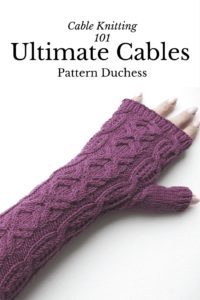
You’re here because you want to learn to make cables. But you’re scared right? Little overwhelmed, don’t know where to start?
How I know? Well, I’m psychic. OK, not really but I’ve been there.
Of course, when I wanted to learn cables then first of all, I didn’t know it’s considered hard. And second of all, I had my Granny (well, I still have so if you have any questions and I don’t know the answer then let me know – I’ll turn to my original source and my knitting idol 😀 ). I’m gonna presume that you don’t have those conditions so I’m gonna motivate you, educate you and share some personal stories.
Let’s start with the bang – cables are actually very easy to make. Say whaaat? Yes, and I have a little “knitting gang” to back me up.
“I would say to anyone trying to learn not only cables, but any technique in knitting…it’s only knitting. There are no rules, there is no one who is going to yell at you if you fail at your first attempt. Trying something new like cables, opens a whole new door to creating. There are endless tutorials via blogs, YouTube, knitting magazines and knitting groups that can serve as a resource for learning and mastering cables. So if you are craving those patterns filled with chunky or delicate cables…dive right in, the water is fine!
Why knit cables?
I think most people want to knit cables because they are attracted to a bit of added 3 dimension to their knits. The brilliance of knitting cables is that it can teach you how yarn can be manipulated into different directions by simply holding some stitches in front or back or changing the order of your stitches. It is a cool thing to learn.”
Andi from My Sisters Knitter
For additional dose of inspiration check here and here 🙂
I love her beautiful pictures, fantastic links and packages of tea (go check her out then you’ll understand what I’m talking about). Thanks to her I’ve been very observant in regards to my tea packages… 😀
“Cables are so much easier than they look, which is why they are such a popular motif in knitting. Most of the time, you are only working with 6 or 8 stitches to work a cable. That’s it. Just 6 or 8 stitches. You can handle that! Take your cables one at a time and you won’t feel overwhelmed by them at all. And if you aren’t feeling confident with reading the directions, google some videos so you can see how they are worked. You really can do this!”
Julie from Knitted Bliss
For dose of inspiration check here and here
You should definitely check her Modification Mondays. There are so much cool stuff. And her knits are pure wonder.
“I always tell new knitters that cables are the best kept secret in knitting. While they can look wildly complicated, they are really quite simple and straightforward. Cables are a matter of working stitches in a different order. I like to use a cable needle because it keeps things even clearer for me, but you can cable without as well.”
Alexa from Tin Can Knits
For dose of inspiration check here and here
And these were just few examples. If you’re not following Tin Can Knits then you’re missing out. You’ve been warned 🙂
Now, can you really tell me that you’re not motivated? Sure you can’t. And if you can – well amuse me and lie 😉
Let’s get going…
I even made table of content for you because it’s a huge post.
♣
TABLE OF CONTENT
♣
What tools do I need to knit cables?
What size cable needle to use?
Where to get all the tools I need?
How to choose right yarn and needles?
Gauge in cable patterns
How to knit cables?
But what if I want to work cables in round?
Cables without cable needle?
Converting cable patterns
How to block cabled items?
Cable techniques for advanced knitters
Cable knitting mistakes and troubleshooting
♣

What tools do I need to knit cables?
- Usual needles. Any needles. You know those sticks you’re using for knitting and purling?
- Cable needle or it’s alternatives – paperclip, double pointed needle (bamboo), short circular needle, tapestry needle and yarn, toothpick, large safety pin etc. Imagination is your friend here.
Cable needle is just a useful tool to hold your stitches so that they won’t go running away. Usually official cable needle has a curve or a hook to keep your stitches from slipping and the shape of it is your personal choice.
My Granny taught me with simple double pointed needle. Nothing fancy. So don’t go and make an excuse not to learn.
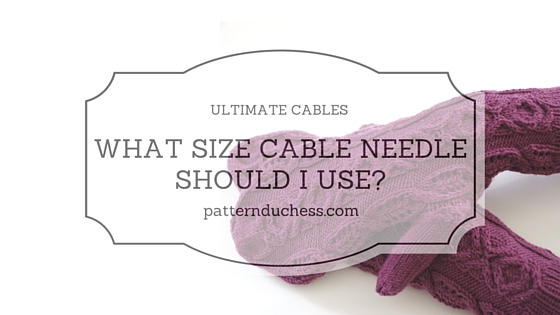
What size cable needle to use?
Size of the cable needle isn’t that important. Use whatever you get your hands on. Remember, it’s just a helpful tool.
But if I use a proper cable needle then I tend to choose little smaller needle than the needles I’m knitting with (about one or two sizes smaller). Then it’s not too loose and not too tight. But again – it’s only purpose is to hold stitches…
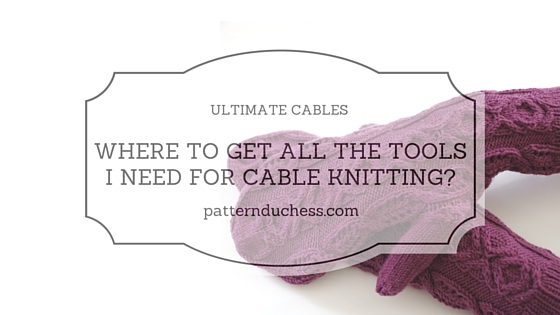
Where to get all the tools I need?
You probably already have all you need to start, but if you really need to buy something to get motivation up (I’ll do that sometimes 😀) then try your local yarn stores, bigger markets or online stores.
I use online stores – there are only two yarn stores on this island (that I know of) and due to our location restrictions prices are… well… I don’t want to say anything bad but it’s cheaper for me to just order online.
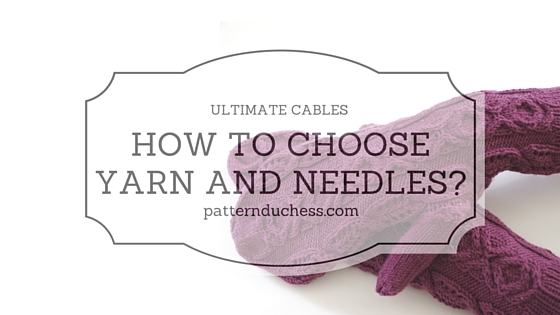
How to choose right yarn and needles?
Rule of thumb is – use whatever you like. Try new things. Experiment.
But if you want to play by the book then know this. Whenever you want to knit cables (or any other patterns that you want to showcase, like lace for example), choose a smooth plied yarn in a solid lighter color. It will give your stitches this nice crisp look.
- more plies and more tightness in the yarn, the more stitch definition you’ll have – your cables will look fantastically detailed;
- thicker yarn means less plies, larger cables, fewer pattern repeats – rustic and less detailed;
*Just so you know – plies are strands in your yarn. There can be one and there can be multiple. Plied yarns are made from several plies of yarn twisted together.

Gauge in cable patterns
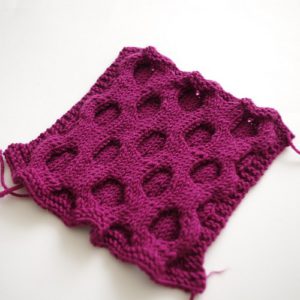
First and foremost – follow your pattern. But if you’re ready to alternate then:
- Cables pull in width wise. For example – sweater worked in a cable pattern will be significantly narrower than one worked in the same number of stitches in stockinette stitch. This also means that you’ll need more yarn and more stitches to work with.
If you decide to add cable(s) to a plain sweater, knit your border and make increases for your cables to maintain the overall width. Good rule of thumb is to increase half of the cable stitches so if you want to work cable over 6 stitches then increase 3 stitches from 3 border stitches. You can add stitches evenly on the last border row placing increases where the cable appear.
Also, be sure to work large enough swatch to be able to measure your gauge accurately. The swatch should include at least two repeats of the cable pattern horizontally and vertically. If you’re working several different cables, you have to check your gauge over each on separately.
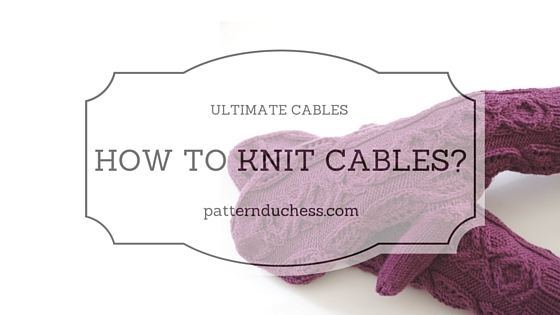
How to knit cables?
Let’s start with theory. Read through and don’t worry if you don’t „get it“. You’ll understand as soon as we’re starting to knit.
Here’s what you need to know. Basically cables are just pattern repeats with rearranged stitches in certain places. And you’ll always cross your cables on right side row (if pattern won’t tell you otherwise).
To make a cable leaning to right rearrange your cable stitches as follows: slip the required number of stitches onto your cable needle. Hold it to the back of the work. Working yarn in front of the cable needle knit the next number of stitches from left hand needle and then work stitches from cable needle.
To move your cable to the left, slip required number of stitches on the cable needle and hold it at the front of the work. Holding your working yarn in back of the cable stitches work required stitches normally and then knit the ones on the cable needle.
Need a tutorial? Tin Can Knits has it.
Note – you don’t have to knit from cable needle. You can also slip your stitches back on left hand needle and work from there. Also, make sure you don’t twist your stitches on cable needle – the first stitch you moved to the holder is the first stitch to be knitted when bringing the stitches back to the original needle (but follow your pattern because sometimes you’ll be required to do something else).
Next row after cable twist:
Most of the time you’ll be knitting the knits and purling the purls on next row. However it may be difficult for you to see which stitch is which and patterns are different so follow directions.
What are background stitches aka filler stitches? The stitches that help your cables to stand out more. These stitches fill the surroundings of cables.
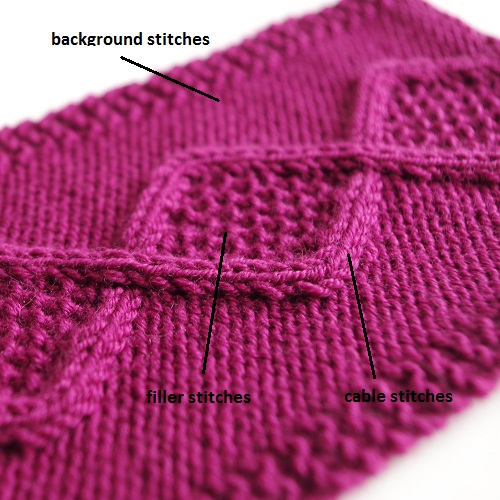
It’s time to grab your tools and work with me. Don’t panic! We are doing this together.
Just find some yarn, pair of needles and something to use as a cable needle. Brand, size and color won’t matter. As long as you don’t use lace weight yarn and needles size US 0, you’re good to go.
If you absolutely need me to tell you what to use then start with thicker yarn such as worsted or DK. Then you can easily see your stitches.
I’m gonna give you a simple pattern that we’ll be working on.
Abbreviations:
- k – knit;
- p – purl;
- L6C – put next three stitches on cable needle and hold in front, knit next three stitches and then three stitches from cable stitches;
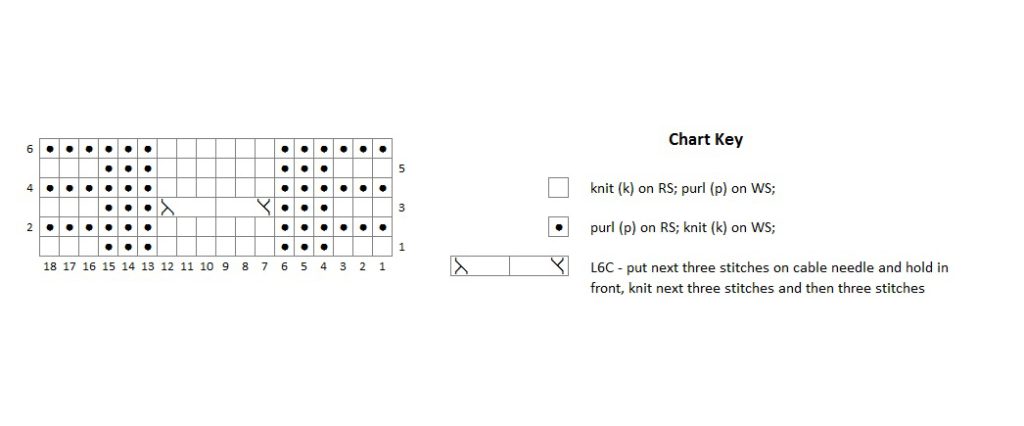
Cast on 18 stitches.
Knit 3 rows.
Cable pattern:
Row 1: k3, p3, k6, p3, k3;
Row 2: k6, p6, k6;
Row 3: k3, p3, L6C, p3, k3;
Row 4: k6, p6, k6;
Row 5: k3, p3, k6, p3, k3;
Row 6: k6, p6, k6;
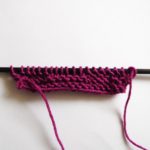
So what’s the first thing you do? – Look for abbreviations. Yes, you may know what those „k“’s and „p“’s mean, but there’s one thing more – „L6C“. And it’s worth of checking, just in case.
And second thing? – Start knitting. Don’t obsess over L6C just yet. Just start knitting.
Put your cable needle a side for now and cast on 18 stitches. Knit 3 rows as pattern stated. It doesn’t matter what cast-on technique you’re using – just do it.
It’s quite straight forward until row 3, right? So work until you reach to row 3. There are 18 stitches on your needle and pattern reads as follows:
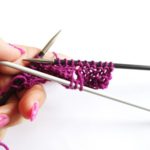
Row 3: k3, p3, L6C, p3, k3;
Knit first 3 stitches, purl next 3 stitches and then what? Look your abbreviations again if you need to. And do what it tells you’ll need to do.
Grab your cable needle, slip first 3 stitches on the cable needle and bring it to front of your work. Set working yarn back of the stitches and knit next 3 stitches from left hand needle. Now transfer stitches from cable needle onto your left hand needle and knit.
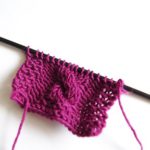
And finish your row with your purl 3 and knit 3. Turn your work. It’s time for row 4.
Worried about what happens on your wrong side row? Don’t be. Just follow your pattern.
Row 4: k6, p6, k6;
Knit 6 stitches, purl 6 stitches (those are your cable stitches) and knit 6 stitches. Work rows 5 and 6 too and you’ve finished your one pattern repeat. Now make one more pattern repeat – rows 1 to 6.
Sometimes beginners get confused with multiple cables. If I have R6C and L6C beside each other then do I need two cable needles? Answer is „No“. You’ll work them one by one like you do with knitting and purling.
And to remind you the basics of chart reading:
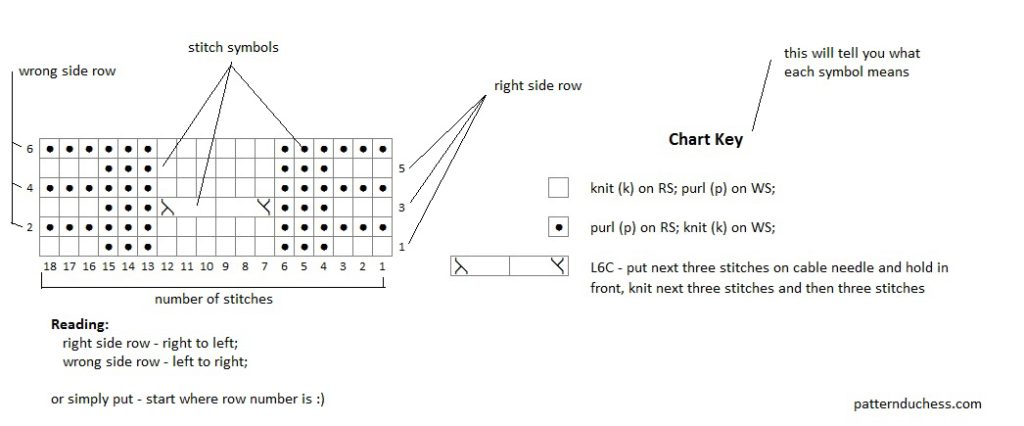
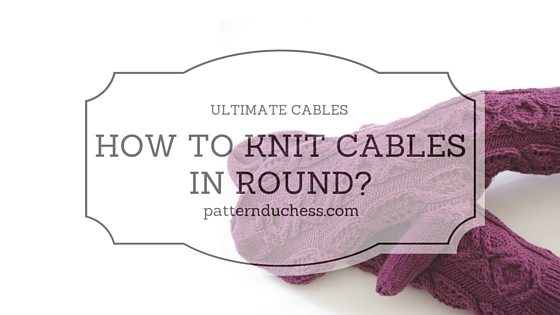
But what if I want to work cables in round?
In tubular knitting you need to remember that you are spiraling up with each row and not making a turned back edge. That may effect your pattern too. Also, keep close count of your rows. It’s difficult to go back and count your rows. They are all right side rows so it is easier to mis-cross the cable one row short.
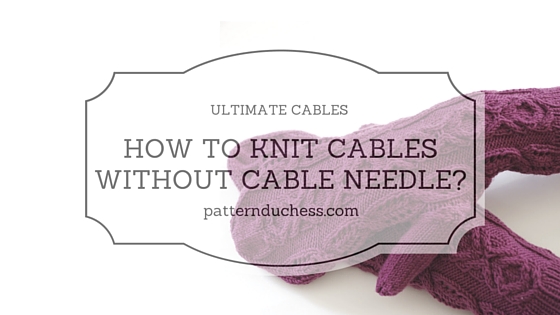
Cables without cable needle?
Like doing cables but hate the “needle”?
First of all – there is no shame in using a cable needle, even if you have to use a tooth pick. But there may be times when you just don’t have anything in hand. So this is the time when this skill comes in handy.
“Learn to work cables without a cable needle from the very start. It makes the process go much faster and is very easy to master.”
Wendy from Wendy Knits
She even have a tutorial for this
Cable twisting to the left:
- Insert right hand needle into stitches which will end up moving to the back;
- Slip all stitches off of left hand needle. The first half of stitches in the cable (which would normally go onto the cable needle) are now “live,” and not on a needle at all. At this point it helps to secure the stitches by holding your right thumb and forefinger close.
- You will slip the left hand needle to the front of work, through the live stitches;
- Transfer stitches now from right hand needle onto left hand needle and knit all stitches as normal;
Cable twisting to the right:
- Insert right hand needle into stitches which will end up moving to the back;
- Slip all stitches off of left hand needle. The first half of stitches in the cable (which would normally go onto the cable needle) are now “live,” and not on a needle at all. At this point it helps to secure the stitches by holding your right thumb and forefinger close.
- You will slip the left hand needle to the back of work, through the live stitches;
- Transfer stitches now from right hand needle onto left hand needle and knit all stitches as normal;
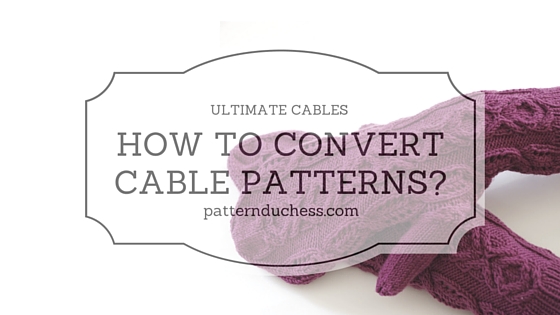
Converting cable patterns…
So you found this nice pattern but it’s knitted flat. You want to knit it in rounds. How to convert it?
…from knitting flat to knitting in rounds – the key thing to remember is that you are always working from the right side. Because the knit stitch and the purl stitch are opposites, to get these “wrong side” rounds to look right on the right side, you have to work stitches the opposite of what you would in flat knitting. For example – if pattern states you need to knit on wrong side then you’ll be purling instead and vice versa.
…from knitting in rounds to knitting in flat – same thing as before only you’ll be turning your work. Figure out which rows will be wrong side rows and work with opposite stitches.
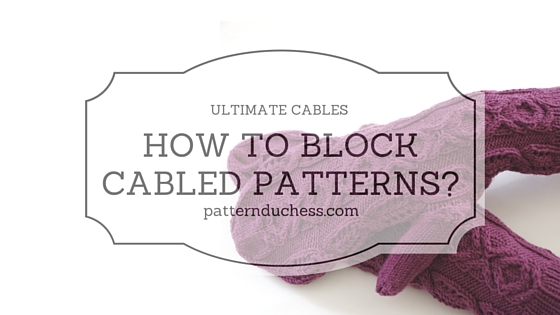
How to block cabled items?
To have nice neat cables with plenty of spring:
- give a gentle wash or just spray wet;
- lay it on blocking board or on any other firm surface to size;
- run fingers either side of each cable to give them a gentle squeeze into nice straight lines (just keep realigning every so often until dry);
But what if it’s something tubular like sweaters?
Best way to do this is to steam one side (back first as this is not the “good side”,) let it dry completely for a day. Then flip it over, steam and let dry. Hold the steam 6-8 inches from the project and smooth with your hand, pinning if necessary.
I used to drove my Granny crazy with “I’m not blocking anything ever” attitude. Now I get it. Finished work will be fantastic after blocking…
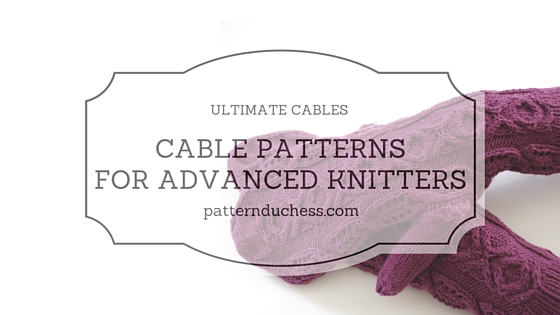
Cable techniques for advanced knitters
Here is this little motivational section. I’m giving just a little overview here so I don’t overwhelm you. But look what you can accomplish…
Open cables / traveling cables
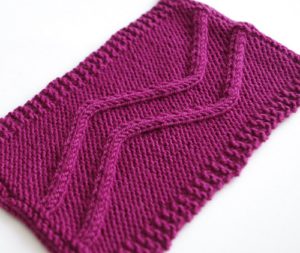
A traveling cable uses background pattern as part of the cable stitch, so that the cable does not just have to go in a straight up-and-down line in your knitted fabric. Like this cable on the picture…
Closed cables
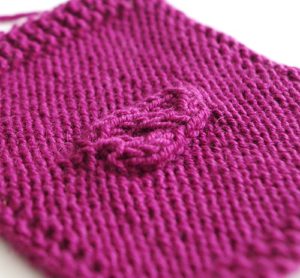
Closed cables are those decorative add-ons that pop out in the middle of nowhere and end in same way. Good rule of thumb is: if you’ve been working in stockinette or something similar and want to begin with cable, increase stitches below each cable, adding as many stitches as half the cable’s width. So, if the cable is two stitches crossed over two stitches, you’d increase two stitches before beginning it. For finishing up you’ll be decreasing as much stitches you increased at the beginning.
Intarsia cables
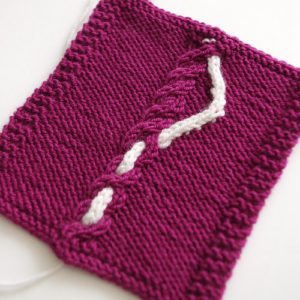
Intarsia cables are just a fancy name for colorful cables. It’s beautiful and effective, but you’ll need to remember one thing – when changing yarns you need to make sure to twist your working yarns. Otherwise your beautiful colorful cable will just come off.
Increasing or decreasing cables
Good skill to know is how to increase and decrease inside the cable. I actually found it now as I did my research for this post (it would have made my cabled sweater sleeves a lot better). All the increasing and decreasing will be made inside of the crossing stitches and it’s actually brilliant.
How come I never thought about it?
Multiple crossing cables
Multiple crossing cables are different cables crossing each other. I call it mixed cables. Look at the swatch for intarsia cables – that’s that…
Reversible cable pattern
And yes. There is this fancy knitting technique and very little information about it. Like it’s some national secret or something.
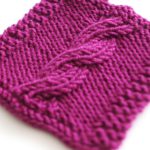
I’ll cover it more in future, but for now you should know that there are two ways to go with this (that I know of):
- Reversible fabrics that have cables on both sides – like ribbing with cables. Cables are usually in knit stitch, bordered by purl stitches. The areas of purl stitches become knit stitches on the back side, creating another place to cable.
- And then there’re cables that actually look the same on the front and the back. Basically when one group of stitches passes over another they’re crossing on the back as well as the front. In order to make cables look similar we need to use a reversible stitch like ribbing. Single rib creates the illusion of smooth stockinette on both sides.
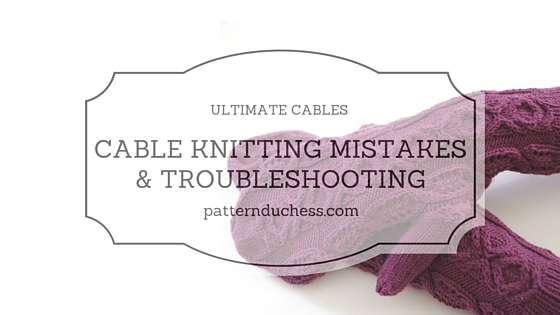
Cable knitting mistakes and troubleshooting
Cable section stitches seem very tight and the purls on either side of the cable are very loose.
When you get to the purl stitches, give your yarn a gentle tug and knit them tighter, then loosen up on the cable stitches. You also have to do the first purl stitch after the cable really tight. If you are using a cable needle then transfer stitches back to the left needle before you knit them, rather than knitting from the cable needle. The stitches in the crossover loosen up after the next row or so. It should get a little better after blocking, too.
My cables look flat, they do not “pop”.
When you knit the stitches on the cable needle, be sure to knit tighter on these, that will make the cable pop up. If the cable stitches are still not popping to your liking then it would have to be the yarn.
Working yarn is getting stuck in the cable needle.
Practice. Also try using safety pin instead of cable needle.
Stitches keep falling off the main needle, followed by the cable stitches.
Try using point protectors or rubber bands or whatever else you use on those points just to keep the cable stitches on the needle until you’re ready to work them. Move your stitch(es) to the cable needle and knit or purl the next stitches as directed. Then, put the stitch(es) that are on the cable needle back onto your left-hand needle and knit or purl them from there. You can also use a DPN to temporarily hold the stitches.
Holes in knitting
It’s normal – it’s only the space where the cables cross and will almost disappear after blocking. You can also try to improve your tension.
Fixing mistakes
Taking back – very carefully drop the cable stitches down and correct your twist. That being said, I do feel you must be able to read your stitches and know how to pick up and knit them properly. Check out Yarn Harlot tutorial for that.
Cutting – well it’s what it tells you. You will be cutting your work, rearranging stitches and sew it back together. Twistcollective has a fantastic tutorial on that.
You made it! Well done! Any questions?
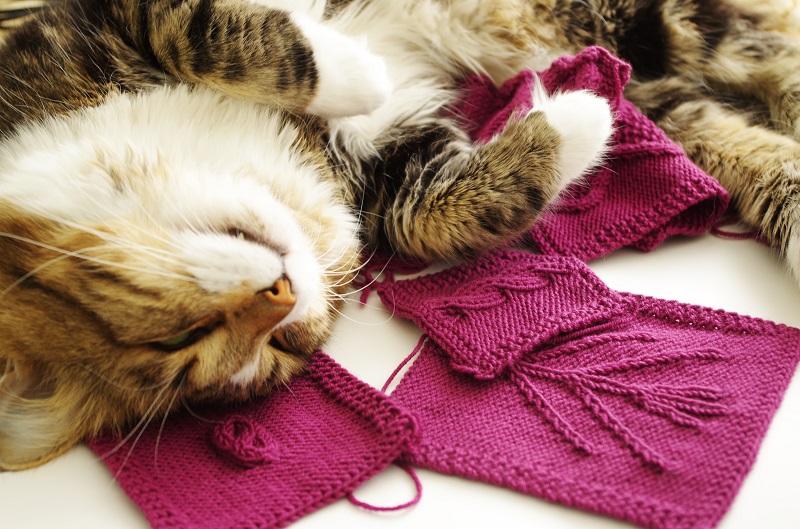
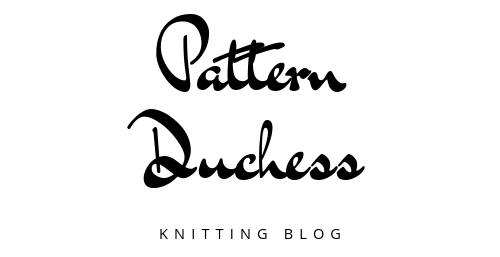
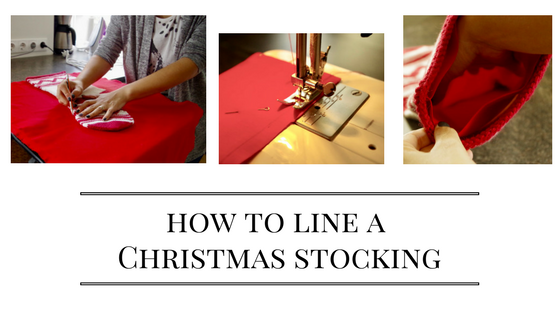

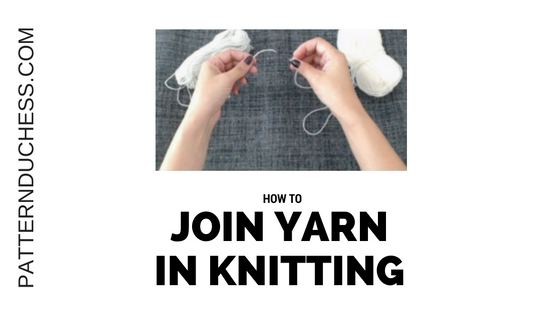
This is an awesome post! I absolutely love cables as much as I love lace. Both are like candy for me, lol. Cables are definitely one of the most enjoyable & adventurous things to learn when learning how to knit.
As a matter of fact, I found the prettiest pattern for a cabled hat -Twisted Cable Knit Hat on allfreeknitting.com – & think I’m going to get started on it right now! 🙂
What a wonderful post!!!! Did that take you all Winter to write? 🙂 Thank you!!! I’m excited to get started.
haha 😀 almost… actually 2 weeks and I’m not satisfied… I think I’m going to add on to it 😀
I, too, was afraid to do cables … and then it finally hit me that all it is is typing the second before the first. So to speak. Just a bit out of order — just like me! LOL
It took me 40 years before trying entrelac — and then tried it – frogged it, tried again, frogged again, tried again. Voile! Such a revelation – and all of a sudden entrelac was EASY.
I think practicing to drive a car got easier, too. 😉
Thank you for amazing sharing of yourself. You are much appreciated.
I think I meant to type ‘kniting’ the second before the first. My typing used to be better . . .
Thank you Marny. You’re right on cables – and yes, entrelac was scary too 🙂 About the car – well…knitting is easier for me 😀 I still need to think through all my activities when I’m driving….and I have license years now 😀
Thank you! Is there a maximum number of stitches that you can involve in a cable before the cross becomes too difficult in terms of tension? For example, lots of patterns talk about a 6 stitch cable with a C3 cross, or an 8 stitch cable with a C4 cross. Can you do a 16 stitch cable with a C8 cross, or a 20 stitch one with a C10 cross? I imagine at some point the cross row would become difficult if not impossible, such as say a 100 stitch cable with a C50 cross… where in your experience does that limit occur? (Hopefully that made sense haha, thanks!!)
I think it depends on the thickness of the yarn. There is no absolute rule, but yes, at some point it will be difficult to cross the stitches. Swatch is always recommended if you want to try some extreme cables 🙂